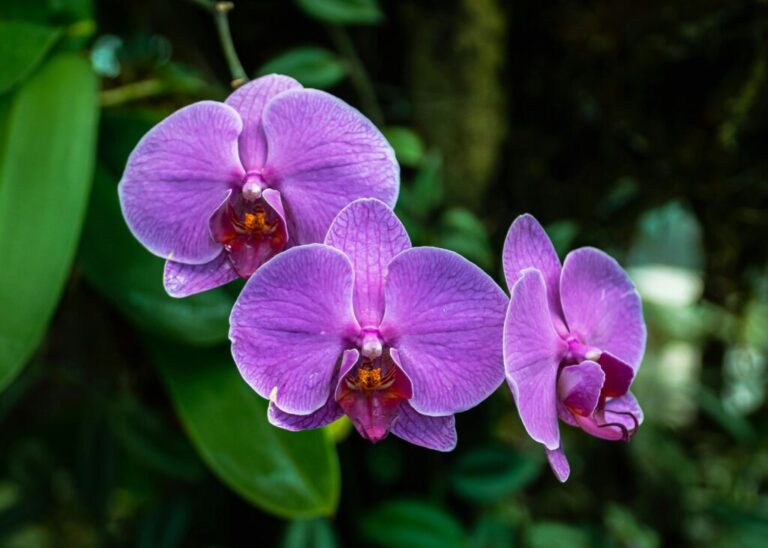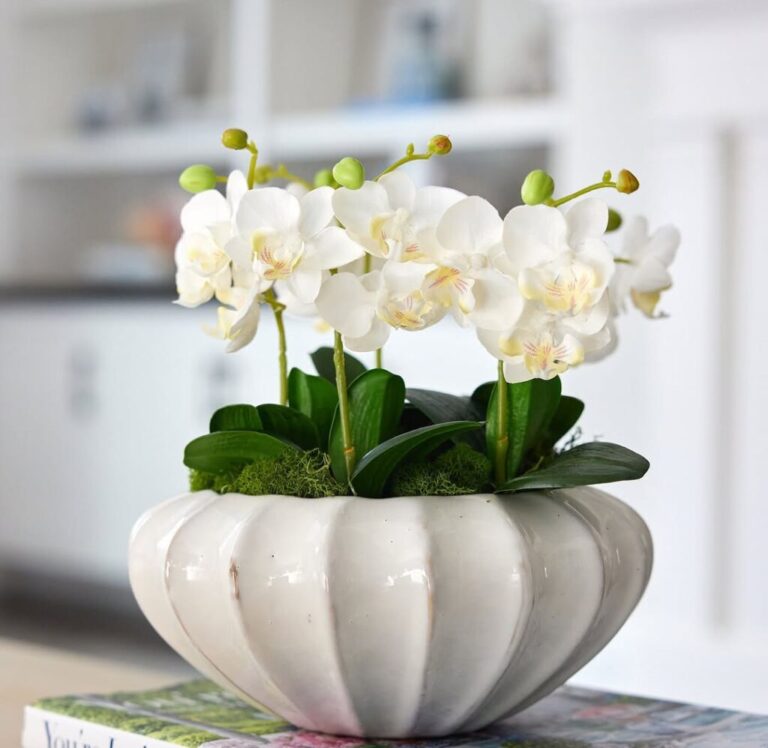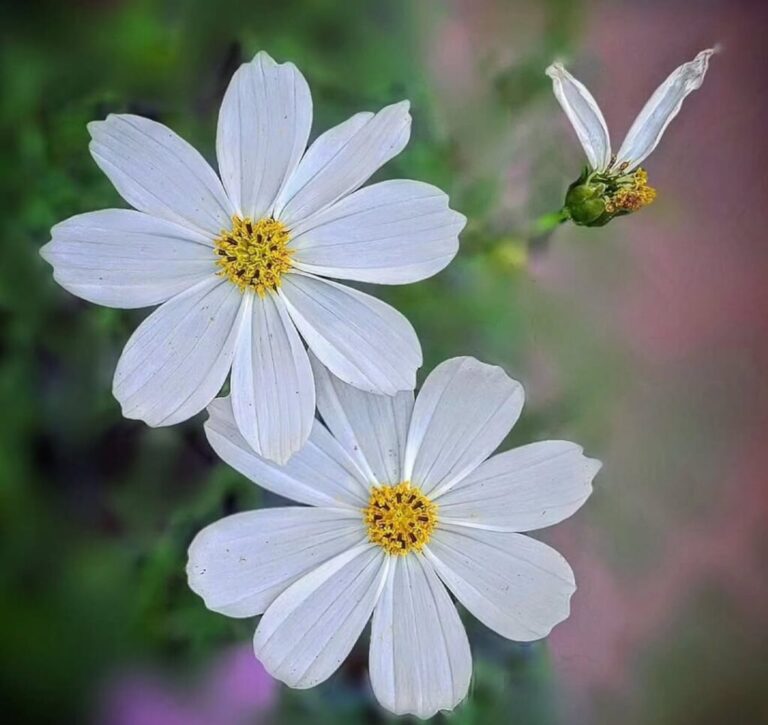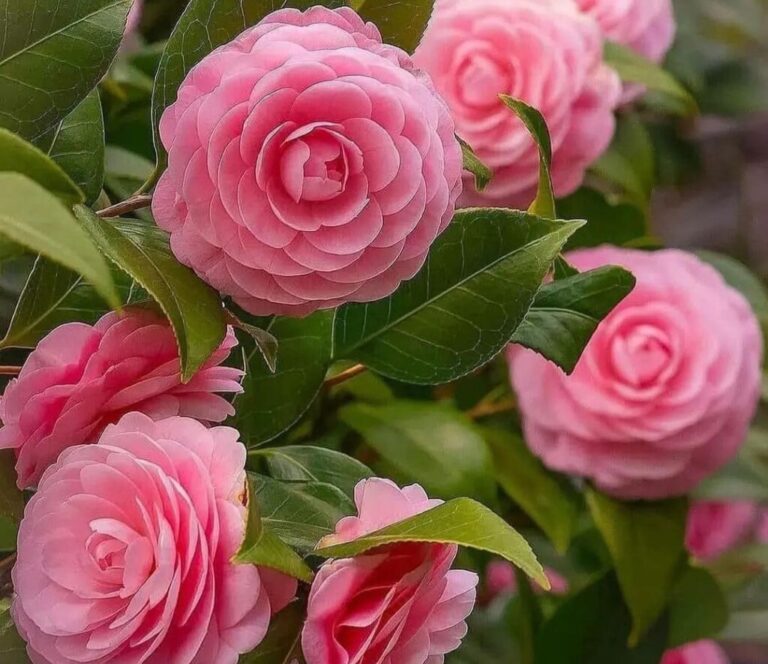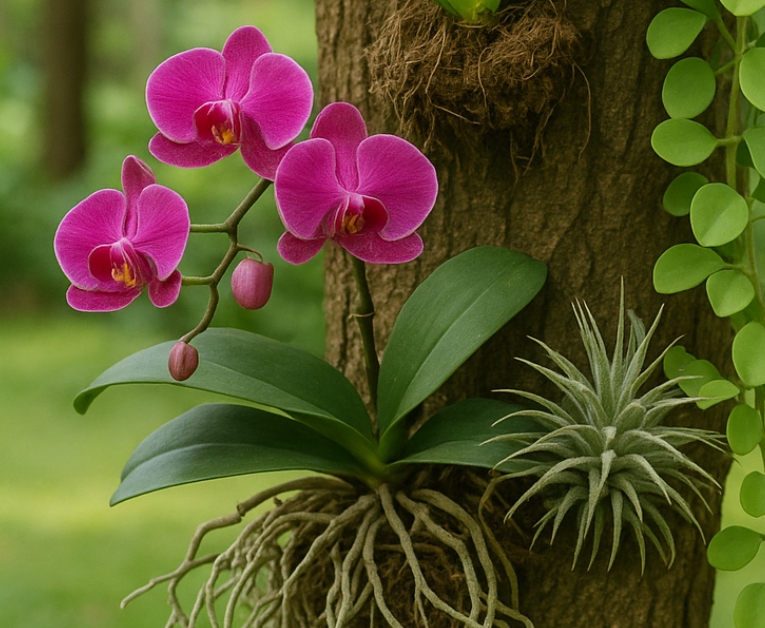Orchids are one of the most beloved houseplants, admired for their exotic beauty and long-lasting blooms. However, caring for orchids can be intimidating, especially when adjusting care routines for different seasons. Whether you’re a beginner or an experienced grower, All-Season Orchid Care requires understanding how seasonal changes affect your plant’s needs. This ultimate year-round guide will help you keep your orchids thriving in every season by addressing their specific care requirements through all phases of growth and dormancy.
Orchids, like all plants, respond to their environment, meaning that light, temperature, humidity, and watering must be adjusted accordingly throughout the year. Some orchids bloom in winter, while others thrive in summer. Knowing when and how to modify their care will ensure consistent, healthy growth and vibrant flowers, making orchid care a rewarding experience.
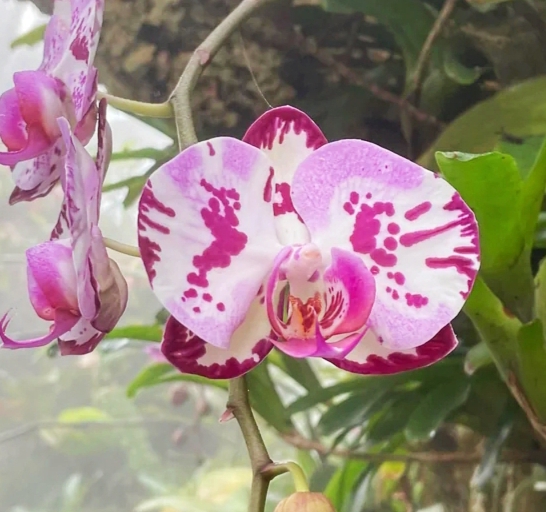
- 1 Understanding Orchid Growth Cycles
- 2 Seasonal Orchid Care Timetable
- 3 Spring Orchid Care: Awakening and Growth
- 4 Summer Orchid Care: Managing Heat and Growth
- 5 Monsoon Orchid Care: Preventing Excess Moisture Issues
- 6 Fall and Autumn Orchid Care: Preparing for Blooming and Cooling Weather
- 7 Winter Orchid Care: Rest and Bloom Maintenance
- 8 Timetable for Seasonal Problems and Solutions
- 9 Final Thoughts
- 10 FAQs on All-Season Orchid Care
Understanding Orchid Growth Cycles
Before diving into seasonal care, it’s important to understand the basic growth cycle of orchids:
Growth Phase (Spring to Summer): Orchids produce new leaves, roots, and shoots.
Blooming Phase (Fall to Winter): Many orchids, like Phalaenopsis, enter their flowering stage.
Resting Phase (Winter to Early Spring): Some orchids go into dormancy, conserving energy for the next bloom cycle.
Seasonal Orchid Care Timetable
This table summarizes the essential indoor, outdoor, and greenhouse orchid care tasks throughout the year:
| Season | Indoor Care | Outdoor Care | Greenhouse Care |
|---|---|---|---|
| Spring | Increase watering, start fertilization, provide bright indirect light, repot if necessary. | Ensure shade during peak sun, increase watering, fertilize biweekly. | Improve ventilation, maintain 50-70% humidity, repot if needed. |
| Summer | Water frequently, provide shade, use fans for airflow, check for pests. | Protect from direct sun, water in the morning, increase humidity. | Maintain high airflow, ensure shading, keep humidity stable. |
| Monsoon | Reduce watering, improve air circulation, apply fungicide. | Protect from excess rain, space plants apart to avoid mold. | Keep humidity controlled, avoid overcrowding, improve drainage. |
| Autumn | Adjust watering as temperatures drop, check for pests, reduce fertilization. | Protect from sudden temperature drops, provide adequate light. | Reduce humidity slightly, monitor for fungal infections. |
| Fall | Encourage blooming with cooler temperatures, stake flower spikes, switch to bloom fertilizer. | Keep orchids in cooler spots to stimulate blooming, reduce watering. | Adjust fertilization, ensure adequate light for flower development. |
| Winter | Reduce watering, maintain humidity with trays, provide artificial lighting if necessary. | Move sensitive orchids indoors, keep temperatures above 50°F. | Maintain stable temperatures, reduce watering, use heaters if needed. |
Spring Orchid Care: Awakening and Growth

Spring marks the beginning of active growth for most orchids. Here’s what you need to do:
1. Increase Watering
As temperatures rise, orchids absorb more moisture. Increase watering gradually but avoid overwatering. Tip: Use room-temperature water and ensure proper drainage to prevent root rot.
2. Fertilization Boost
Use a balanced orchid fertilizer (20-20-20) every two weeks to support new growth. Tip: Dilute the fertilizer to half-strength to avoid burning the roots.
3. Repot if Necessary
Spring is the best time to repot orchids that have outgrown their containers. Tip: Use a fresh orchid bark mix and trim any dead roots during repotting.
4. Increase Humidity and Light
Longer days mean more sunlight. Place orchids in bright, indirect light. Tip: Maintain humidity levels around 50-70% using a humidity tray or misting.
Summer Orchid Care: Managing Heat and Growth

With higher temperatures, orchids require extra care to prevent stress.
1. Frequent Watering
Watering needs increase due to evaporation. Check moisture levels regularly. Tip: Water in the morning to allow roots to dry by evening, reducing the risk of fungal infections.
2. Provide Shade and Airflow
Too much direct sun can scorch leaves. Provide shade using sheer curtains. Tip: Use a fan to improve airflow and prevent overheating.
3. Continue Fertilization
Fertilize weekly with a balanced or growth-specific formula. Tip: Flush the pot with plain water once a month to remove salt buildup from fertilizers.
4. Watch for Pests
Warm conditions attract pests like spider mites and aphids. Tip: Inspect leaves regularly and treat infestations with neem oil or insecticidal soap.
Monsoon Orchid Care: Preventing Excess Moisture Issues

The rainy season brings high humidity and excess moisture, which can lead to fungal issues.
1. Reduce Watering
Excess moisture in the air means orchids require less watering. Tip: Only water when the top inch of the potting medium feels dry.
2. Improve Air Circulation
Damp conditions encourage fungal infections. Tip: Use a fan or open windows to ensure airflow around your orchids.
3. Protect Against Fungal Infections
Monsoons increase the risk of root rot and leaf diseases. Tip: Apply a preventive fungicide and avoid letting water sit in the crown of the plant.
4. Avoid Overcrowding
Keep orchids spaced apart to prevent mold and mildew growth. Tip: Wipe excess moisture from leaves to minimize bacterial spots.
Fall and Autumn Orchid Care: Preparing for Blooming and Cooling Weather
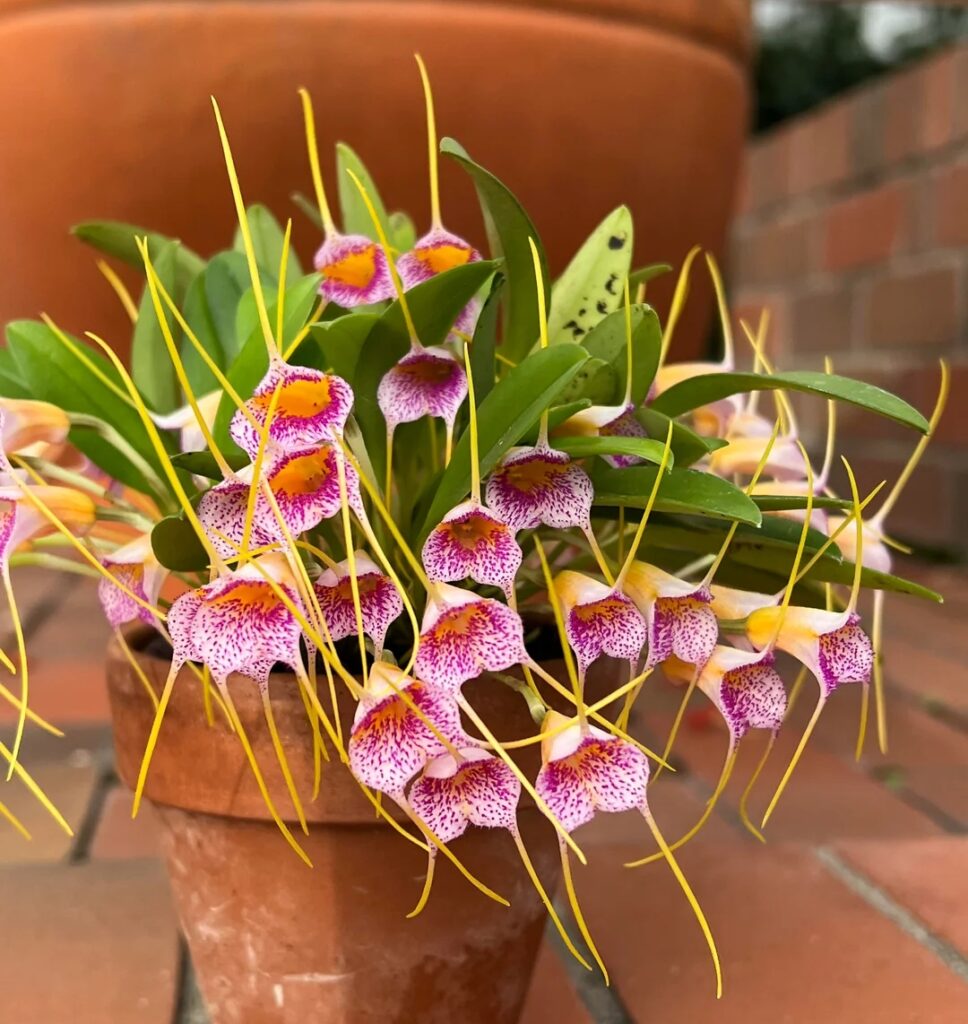
1. Reduce Watering Slightly
With cooler temperatures, orchids require less water. Tip: Let the top inch of the growing medium dry out before watering.
2. Adjust Light Exposure
Some orchids, like Phalaenopsis, need a temperature drop to trigger blooming. Tip: Move orchids to a slightly cooler room (55-65°F) at night to encourage flower spikes.
3. Continue Fertilization, but Adjust Formula
Switch to a bloom booster fertilizer (higher phosphorus content) to promote flowering. Tip: Apply fertilizer every two weeks for optimal bloom development.
4. Stake Flower Spikes
As flower spikes emerge, support them with stakes to prevent bending. Tip: Attach ties loosely to allow for natural movement.
Winter Orchid Care: Rest and Bloom Maintenance

1. Reduce Watering Further
Orchids in dormancy need less water. Tip: Water only when the medium is dry to the touch.
2. Maintain Humidity
Indoor heating dries out the air, affecting orchid health. Tip: Use a humidifier or pebble trays to keep humidity levels above 40%.
3. Provide Sufficient Light
Shorter days mean less natural light. Consider artificial grow lights if needed. Tip: Position orchids in south-facing windows for maximum light exposure.
4. Monitor for Bud Blast
Sudden temperature changes or drafts can cause buds to drop. Tip: Keep orchids away from vents, radiators, and cold drafts.
Timetable for Seasonal Problems and Solutions
| Season | Common Problems | Solutions |
|---|---|---|
| Spring | Overwatering due to increased watering needs | Water only when the roots start drying out |
| Pests like aphids and mealybugs | Inspect plants regularly and use insecticidal soap if needed | |
| Root rot from compacted media | Repot orchids if necessary with fresh potting mix | |
| Summer | Heat stress and sunburn | Move to shaded areas or use shade cloth |
| Dehydration due to high temperatures | Increase watering frequency and use humidity trays | |
| Fungal infections from humidity | Improve air circulation and avoid wetting the leaves | |
| Monsoon | Root rot due to excess moisture | Ensure pots have proper drainage and reduce watering |
| Fungal and bacterial infections | Use fungicides and maintain good airflow | |
| Autumn | Reduced light and slow growth | Adjust fertilization and consider using grow lights |
| Cold drafts causing stress | Move orchids away from windows and insulate pots if needed | |
| Winter | Dry indoor air from heating systems | Use a humidifier or humidity tray |
| Cold damage in non-heated environments | Keep orchids in a stable temperature range above 55°F (13°C |
Final Thoughts
Orchid care changes with the seasons, but understanding their needs will ensure year-round success. Whether your orchid is actively growing, blooming, or resting, this guide will help you provide the best care at every stage. With proper attention, your orchids will reward you with breathtaking blooms season after season.
By following this ultimate year-round care guide, you’ll transform into a confident orchid grower, capable of maintaining these stunning plants in all conditions!
FAQs on All-Season Orchid Care
What is All-Season Orchid Care?
All-Season Orchid Care is a year-round approach to maintaining the health and beauty of your orchids, regardless of the season. Orchids require adjustments in their care routine based on seasonal changes in temperature, humidity, and light. By following proper All-Season Orchid Care techniques, you can ensure your orchids remain healthy, vibrant, and blooming throughout the year.
How often should I water orchids in different seasons?
Watering is a crucial part of All-Season Orchid Care, and the frequency should change depending on the season. During summer, orchids require more frequent watering, typically 2–3 times a week, due to higher temperatures and increased evaporation. In winter, orchids need less water—usually once a week or even less—since lower temperatures slow down evaporation and plant metabolism. Always check the moisture level of the growing medium before watering to prevent overwatering, which can lead to root rot.
Do orchids need different light conditions throughout the year?
Light exposure is a key factor in All-Season Orchid Care. Orchids thrive in bright, indirect light, but the amount and intensity of light change with the seasons. In summer, position your orchids in a shaded area or use sheer curtains to diffuse harsh sunlight. In winter, when natural light is weaker, you may need to supplement with grow lights to maintain healthy growth. Adjusting light conditions accordingly will help keep your orchids in their best shape all year.
How can I maintain proper humidity for orchids in all seasons?
Maintaining humidity is essential for effective All-Season Orchid Care. Orchids prefer humidity levels between 50% and 70%, but these levels fluctuate with seasonal changes. In dry winter months, use humidity trays, misting, or a humidifier to keep the air around your orchids moist. In summer, when humidity is naturally higher, ensure good air circulation to prevent fungal issues. Consistently monitoring and adjusting humidity levels will help orchids thrive no matter the season.
Should I fertilize orchids year-round?
Fertilization plays a significant role in All-Season Orchid Care. Orchids need regular feeding during their active growth phase in spring and summer. Use a balanced orchid fertilizer weekly at a diluted strength to encourage strong root and flower development. In fall and winter, when growth slows down, reduce fertilization to once a month. Proper fertilization ensures your orchids receive the necessary nutrients for year-round health and blooming.
How do I protect orchids from extreme summer heat?
Summer heat can be stressful for orchids, making heat protection an important part of All-Season Orchid Care. To prevent overheating, place orchids in a well-ventilated area with indirect sunlight. Increase humidity by misting or using humidity trays, and avoid placing orchids near heat sources like radiators or direct afternoon sun. Keeping your orchids cool and hydrated will prevent heat stress and sunburn.
What’s the best way to care for orchids in winter?
Winter care is a crucial aspect of All-Season Orchid Care, as cold temperatures can harm orchids. Move your orchids away from cold drafts, such as those near windows or doors. Use grow lights if natural light is insufficient, and water sparingly to avoid root rot. Additionally, ensure the humidity levels remain stable, as indoor heating can dry out the air. Following these winter care tips will keep your orchids healthy throughout the colder months.
Do I need to repot orchids in every season?
Repotting is not needed in every season, but it is an essential component of All-Season Orchid Care. The best time to repot orchids is in the spring or after flowering, when new root growth begins. Avoid repotting during extreme summer or winter conditions, as orchids are more vulnerable to stress. When repotting, use a fresh orchid mix and a well-ventilated pot to ensure optimal growth and prevent root rot.
How do I prevent pests year-round?
Pest control is a major concern in All-Season Orchid Care. Orchids can attract pests like aphids, spider mites, and mealybugs, especially when kept indoors. Regularly inspect your plants for signs of infestation, and take action immediately if pests appear. Use neem oil or insecticidal soap as a natural remedy, and maintain proper air circulation to deter pests. Keeping your orchids clean and pest-free year-round will promote healthy growth and blooming.
Can orchids bloom all year with proper care?
Encouraging year-round blooming is one of the biggest goals in All-Season Orchid Care. While most orchids have specific blooming seasons, consistent care can encourage reblooming. Providing the right balance of light, temperature, humidity, and fertilization increases the chances of continuous blooms. Phalaenopsis orchids, for example, can rebloom multiple times a year when given optimal care. By following an effective All-Season Orchid Care routine, you can enjoy beautiful orchid flowers throughout the year.
How do I adjust All-Season Orchid Care for different orchid species?
Different orchid species have unique care requirements, but All-Season Orchid Care provides a general guideline for keeping them healthy year-round. Phalaenopsis orchids need stable temperatures and indirect light, while Cattleyas require brighter conditions. Dendrobiums and Oncidiums may need different watering and fertilization schedules. Understanding the specific needs of your orchid species while following All-Season Orchid Care principles ensures the best growth and blooming.
How do I prevent root rot with All-Season Orchid Care?
Root rot is a common issue in orchids, but proper All-Season Orchid Care can help prevent it. Always use a well-draining potting mix, such as bark or sphagnum moss, and ensure the pot has drainage holes. Avoid overwatering, especially in winter when orchids need less moisture. Regularly check the roots—healthy ones should be firm and green or white. If you follow the correct watering schedule as part of All-Season Orchid Care, you can keep your orchids’ roots strong and healthy
How does temperature affect orchids in All-Season Orchid Care?
Temperature plays a critical role in All-Season Orchid Care, as orchids are sensitive to sudden fluctuations. During summer, keep orchids in a shaded, well-ventilated area to prevent heat stress. In winter, avoid exposing them to cold drafts and sudden temperature drops. Most orchids thrive in temperatures between 60–75°F (15–24°C). Ensuring stable temperatures year-round is key to successful All-Season Orchid Care and long-lasting blooms.
What are the best pots to use for All-Season Orchid Care?
Choosing the right pot is an important part of All-Season Orchid Care. Orchids do best in breathable pots like terracotta or plastic containers with multiple drainage holes. Clear plastic pots are also useful, as they allow you to monitor root health. Avoid pots without drainage, as stagnant water can lead to root rot. By selecting the proper pot, you enhance your All-Season Orchid Care routine and promote healthy root growth.
How can I encourage orchids to rebloom with All-Season Orchid Care?
Reblooming is a rewarding part of All-Season Orchid Care, but it requires patience and the right approach. To trigger reblooming, ensure your orchid gets the right amount of light, maintain proper watering habits, and fertilize regularly. Some orchids, like Phalaenopsis, need a slight temperature drop at night to stimulate flower spikes. Following a consistent All-Season Orchid Care plan with proper lighting, humidity, and fertilization will increase the chances of reblooming throughout the year.


